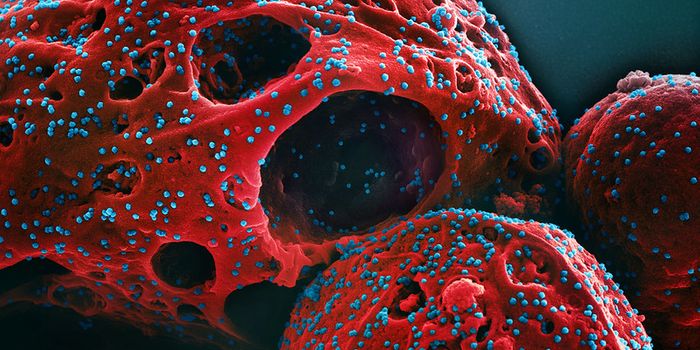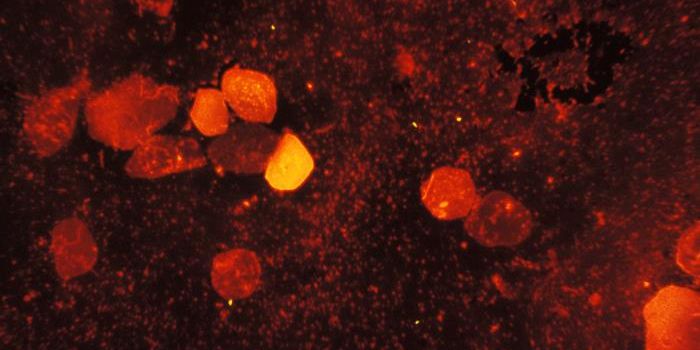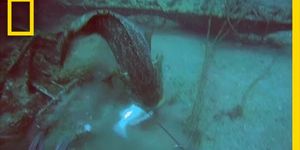Have you ever wondered what would survive a nuclear disaster? What comes to mind? Cockroaches? Cher? What about bacteria?! The
Guinness Book of World Records called
Deinococcus radiodurans the “world’s toughest bacterium”. That’s no surprise when your nickname is “
Conan the Bacterium”.
Deinococcus radiodurans was discovered by Arthur W. Anderson in 1956. Anderson was working in Corvallis, Oregon at the Oregon Agricultural Experiment station. The researchers were attempting to sterilize canned foods with gamma radiation. When a can of meat spoiled, they discovered
Deinococcus radiodurans.
Deinococcus are spherical bacteria, but they actually live in groups of four cells - a tetrad.
Deinococcus has a thick cell wall which makes it appear Gram-positive when stained. However, it has two membranes, so more closely resembles a Gram-negative cell.
Just how tough is
Deinococcus? A chest X-ray produces about 1 m
Gy of radiation, 5 Gy kills a human, and 200-800 Gy kills
E. coli.
Deinococcus can survive 5,000 Gy. When exposed to 15,000 Gy, it’s viability decreased to 37%. Not too shabby.
What makes
Deinococcus radioresistant? According to Claire M. Fraser of The Institute for Genome Research (the group that sequenced the
Deinococcus genome), “the organism can put its genome back together with absolute fidelity”. Radiation damages cells because it breaks apart DNA.
Deinococcus actually has fewer DNA repair proteins than most bacteria, but it is particularly good at making those repairs. It also totes around 4-10 copies of its genome, where most bacteria just have 1. It probably uses these backups to help repair damage. There is some data to suggest that
Deinococcus also uses
manganese to combat oxidative damage and
nitric oxide to jump start growth after DNA repair.
Of course, all of these superpowers are being harnessed by us humans in one way or another. Many researchers want to use
Deinococcus for bioremediation at highly radioactive sites. Not only can it be engineered to break down contaminants like
toluene, but it is virtually the only bacterium that can survive the harsh conditions. Since it’s a glutton for punishment,
Deinococcus could also be used to break down sewage on long-distance space flights. Last, and my personal favorite, a group at Imperial College London
translated the song “It’s a Small World” into DNA bases and stored it in the
Deinococcus genome (at least we’ll be able to sing Disney songs after the world ends).
So, the next time someone asks you what will survive a nuclear disaster, you can tell them cockroaches, Cher, AND
Deinococcus!
Sources: University of Florida, MicrobeWiki,
PNAS,
Microbiology,
New Scientist, Genome News Network, NASA, Science Daily, Wikipedia




![[Guide] 7 Strategies to Boost Laboratory Collaboration](https://d3bkbkx82g74b8.cloudfront.net/eyJidWNrZXQiOiJsYWJyb290cy1pbWFnZXMiLCJrZXkiOiJjb250ZW50X2FydGljbGVfcHJvZmlsZV9pbWFnZV83YzBjZWIwM2Y5YzI4MmFlYzBhZDZhMTcyNTQ1ZGU3YmE4Y2MzMDYyXzUxNDkuanBnIiwiZWRpdHMiOnsidG9Gb3JtYXQiOiJqcGciLCJyZXNpemUiOnsid2lkdGgiOjcwMCwiaGVpZ2h0IjozNTAsImZpdCI6ImNvdmVyIiwicG9zaXRpb24iOiJjZW50ZXIiLCJiYWNrZ3JvdW5kIjoiI2ZmZiJ9LCJmbGF0dGVuIjp7ImJhY2tncm91bmQiOiIjZmZmIn19fQ==)




